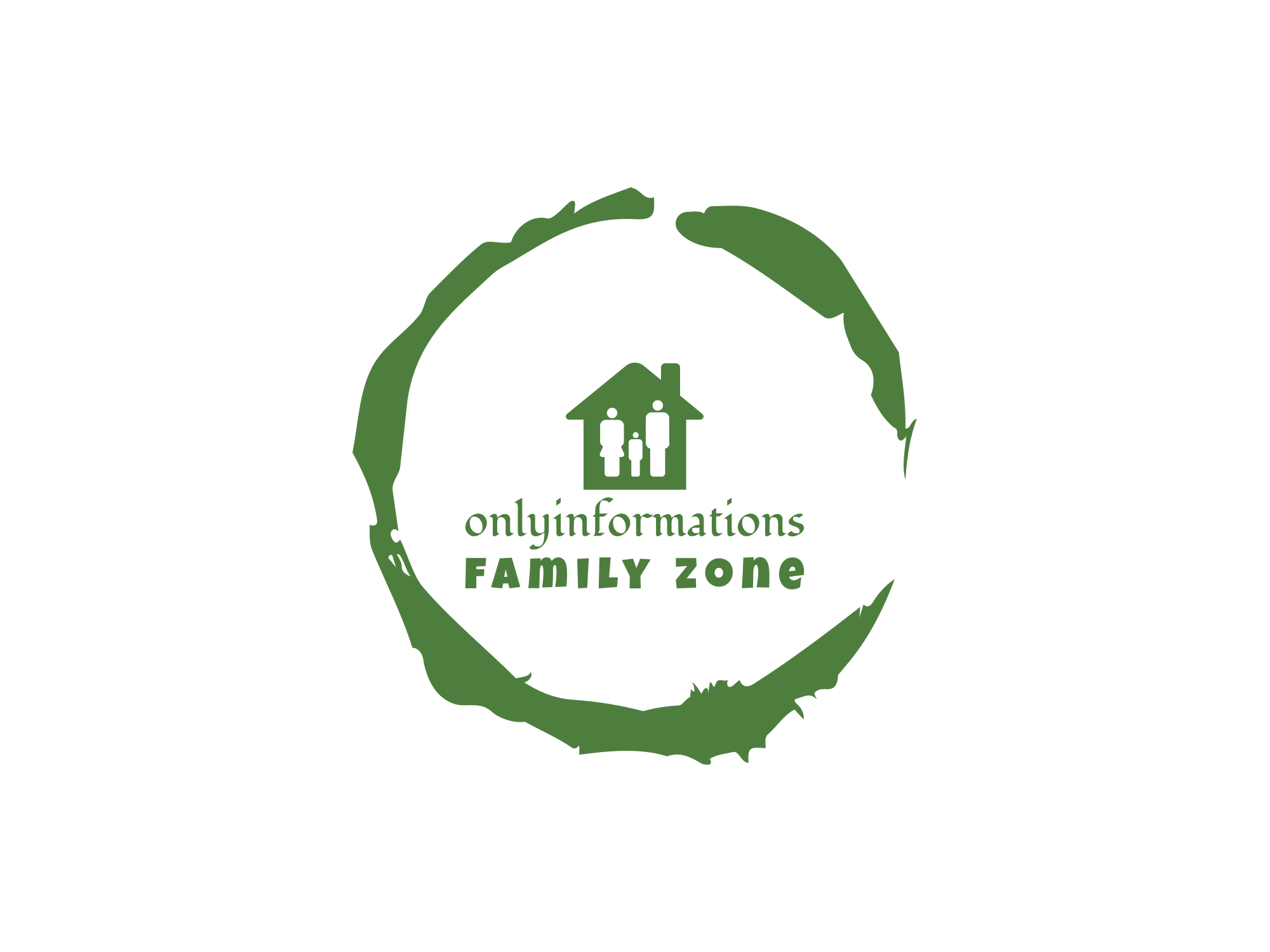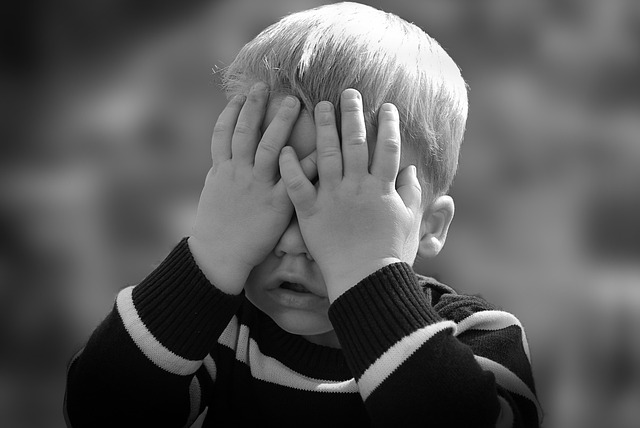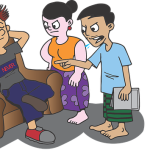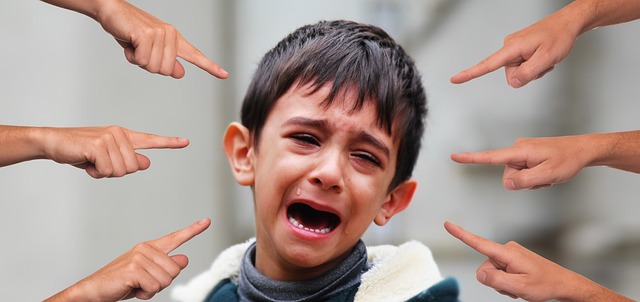Child’s Mental Health: How To Elaborate?
Child’s Mental Health
The importance of the child’s Mental Health is so high that everyone has been effect by it, including children. It can be problematic to explain mental health to a child in every aspect in detail. Although, it is essential to do so in a way that is age-appropriate and easy to understand. Here are some tips for explaining mental health to a child:
- Use simple language: Sometimes, it’s hard to understand complex medical terms by common people. So it is essential to communicate in easy-to-understand language that is easy for them. For example, instead of saying “depression,” you could say “feeling sad for a long time.”
- Use examples: We can make it possible by using or quoting useful benchmarks through examples. Also, we can use real-life scenarios to help them understand mental health. For instance, you could explain that feeling sad is normal after a loved one dies. But it’s not normal to always feel sad.
- Talk about feelings: There is another myth that children may not understand the concept of mental health. However, they do understand feelings. We should explain that mental health is about how we feel and cope with different emotions.
- Use positive language: Using positive language when discussing mental health is essential. Instead of saying “crazy” or “insane,” you could say “different” or “unique.”
- Encourage questions: Normally, it is observed that children may have many questions about mental health. But the interesting fact is that it’s essential to encourage them to ask what they are thinking. This will help them understand the topic better and feel more comfortable discussing it.
- Remind them that seeking help is okay: Children should know it’s okay to seek help if they or someone they know is struggling with such issues. You can explain that mental health professionals like counsellors, therapists, and doctors are there to help them.
In summary, before deepening, we are trying to explain that a child’s mental health can be challenging. But it is eager to do so in a way that is easy to understand. We need to use simple language to communicate and teach them during this period. Which comprises some real examples, positive language, and encouraging questions that can help make the conversation more manageable. So please remember that seeking help is okay and should be encouraged.
Bullying and Its Impact on Child’s Mental Health:
Understanding, Addressing, and Preventing the Harms
Bullying others is a pervasive issue affecting individuals of all ages, particularly children and adolescents. This habit participates in repeated aggressive behaviour intended to harm, intimidate, or socially isolate others. The detrimental effects of bullying extend beyond the immediate experience, leaving lasting scars on its victims’ mental health and well-being. That’s why we are just trying to explore the profound impact of bullying on mental health. Also, its various forms, the factors contributing to its occurrence, and the importance of prevention and intervention strategies.

Forms of Bully:
The habit can take many forms, including physical aggression, verbal abuse, social exclusion, cyberbullying, and relational aggression. But the worst form of it is physical bullying which involves acts of physical harm or violence. At the same time, verbal bullying includes name-calling, insults, or derogatory remarks. Another kind of hidden bullying is social exclusion. This especially refers to deliberately isolating someone from social interactions, and cyberbullying occurs through electronic platforms, such as social media or messaging apps. Relational aggression focuses on damaging social relationships, spreading rumors, or manipulating social dynamics to harm others.
Impact on Child’s Mental Health:
The consequences of bullying on a Child’s Mental Health can be severe and long-lasting. Sadly, the victims of bullying often experience a range of emotional, psychological, and behavioral problems.
Prevention and Intervention:
In today’s modern society, we need to open this subject related directly to children’s Mental Health. That Is more important for preventing bullying requires a multi-faceted approach involving schools, parents, communities, and society. Some key strategies include:
The habit of bullying others to any extent or kind is included in a severe issue with far-reaching effects on the Child’s Mental Health and well-being of individuals. So we need to understand and raise awareness of this worse habit at every possible level. When people come to know its impact on mental health and the contributing factors, we can work towards effective prevention and intervention strategies. It also includes schools, parents, communities, and society collaborating to create supportive environments that foster empathy, respect, and inclusivity. Together, we can strive to eliminate bullying and ensure the mental well-being of all individuals, promoting a healthier and happier society for everyone.
Addressing Anxiety Disorders in Children
Anxiety disorders have become increasingly prevalent, affecting people of all ages, including children. While it’s normal for children to experience occasional worries and fears, anxiety disorders go beyond typical childhood anxieties and can sign. They can impact daily life, well-being, and overall development. We include this information under the topic to light on anxiety disorders in children, exploring their causes, symptoms, and available treatment options.
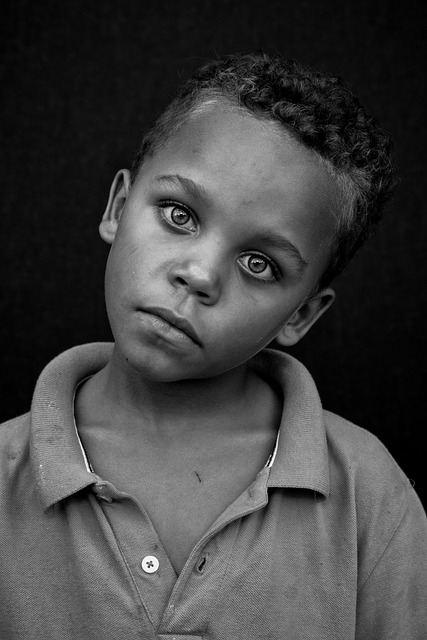
Understanding Anxiety Disorders in Children:
This disorder, particularly in children mischaracterized by persistent and excessive worry, fear, or unease, can interfere with their daily activities and relationships. These can manifest in various forms, including generalized anxiety disorder (GAD), separation anxiety disorder, social anxiety disorder (SAD), specific phobias, and panic disorder.
Causes and Risk Factors:
Typically, it is caused by genetic, environmental, and psychological factors. In some cases, there is the probability of a family history of anxiety disorders, temperament, exposure to stressful life events, traumatic experiences, excessive parental pressure, and disruptions in family or social environments. Children with certain medical conditions, such as chronic illnesses, may be more susceptible to anxiety disorders.
Signs and Symptoms:
As parents and caregivers, it’s moral to be aware of the signs of any anxiety disorder in children. Which is crucial for early intervention. While symptoms can vary depending on the specific condition, some common indicators include excessive worry, restlessness, irritability, difficulty concentrating, sleep disturbances, physical complaints (such as stomachaches or headaches), avoidance of certain situations or places, and reluctance to attend school or socialize with peers.
Effects on Child Development:
Untreated anxiety disorders can significantly impact a child’s overall development and well-being. Chronic anxiety can impair cognitive functioning, academic performance, social skills, and self-esteem. There is a chance this may also lead to physical health issues, such as fatigue, weakened immune systems, and digestive problems. Early identification and intervention are vital to preventing long-term consequences.
Diagnosis and Assessment:
Diagnosing anxiety disorders in children requires a comprehensive evaluation conducted by mental health professionals. The assessment typically includes interviews with the child and parents, behavior, and standardized assessment tools. Collaborating with teachers and other caregivers can provide valuable insights into the child’s functioning across different settings.
Treatment Approaches:
Fortunately, anxiety disorders in children are highly treatable. The most effective treatment plans often involve a combination of therapeutic approaches tailored to the child’s specific needs. Common interventions include:
- Cognitive-behavioral therapy (CBT): This approach helps children identify and challenge anxious thoughts, develop coping strategies, and gradually face feared situations through exposure therapy.
- Play therapy is beneficial for younger children because it may allow them to express their feelings and fears in a non-threatening, imaginative environment.
- Parental involvement and support: Educating and involving parents in the treatment process is essential. Parenting strategies that promote relaxation, communication, and problem-solving skills can significantly benefit the child’s progress.
- Medication is typically combined with therapy and closely monitored for effectiveness and side effects. But under the supervision of a professional therapist and consultant only.
Shedding Light on Depression in Children and Adolescents
This serious mental health condition affects individuals of all ages, including children and adolescents. While for young people to experience fluctuations in mood, depression goes beyond temporary sadness and can significantly impact their emotional well-being, relationships, and overall development. This article aims to explore the topic of depression in children and adolescents, providing insights into its causes, symptoms, and available treatment options.
Understanding Depression in Children and Adolescents
Depression in children and adolescents refers to persistent and pervasive hopelessness and a lack of interest in healthy physical activities. It is characterized by emotional, cognitive, and physical symptoms that significantly impair daily functioning and quality of life. Depression can manifest differently in young people compared to adults, making it essential to understand the unique aspects of depression in this age group.
Causes and Risk Factors:
The development of depression in children and adolescents is multifactorial, resulting from a complex interplay of genetic, biological, environmental, and psychosocial factors. Common risk factors may include a family history of mental disorders, exposure to trauma or adverse life events, chronic stress, social isolation, low self-esteem, academic pressure, and certain personality traits. Also, the many facts are that depression can occur without any obvious external triggers.
Signs and Symptoms:
Recognizing the signs and symptoms of depression in children and adolescents is crucial for early identification and intervention. Indeed, any signs and symptoms may vary from person to person. While some common indicators include persistent sadness, irritability, loss of interest in activities, social withdrawal, changes in appetite and sleep patterns, and, most importantly, there is a chance of feelings of worthlessness or guilt, physical complaints (such as headaches or stomachaches), and thoughts of death or suicide. It is worth noting that symptoms may be subtler in some cases, making it challenging to recognize depression.
Effects on Child and Adolescent Development:
Depression can profoundly affect the overall development of children and adolescents. It can impact their academic performance, social relationships, self-esteem, and physical health. Depressed youth may experience difficulties in school. Also have strained relationships with peers and family members, engage in risky behaviors, and be at higher risk of developing substance abuse issues. Early identification and intervention are crucial to prevent long-term consequences and support healthy development.
Diagnosis and Assessment:
Diagnosing depression in children and adolescents requires a comprehensive evaluation conducted by mental health professionals. The assessment typically involves interviews with the young person and their parents, behavior observation, and standardized assessment tools. Collaboration with teachers and other caregivers can provide valuable information about the child’s functioning across different settings.
Treatment Approaches:
Treating depression in children and adolescents often involves a combination of therapeutic approaches tailored to their needs. Some standard treatment options include:
- Psychotherapy: Cognitive-behavioral therapy (CBT) is the most effective therapy for depression. It identifies and challenges negative thought patterns, develops healthy coping strategies, and promotes positive behaviors.
- Medication: Sometimes, medication may be advisable to help manage depressive symptoms.
Preventive Measures and Supportive Environment:
Promoting good Children’s Mental Health in children requires a holistic approach. Parents, educators, and caregivers can create a supportive environment by fostering open communication, teaching stress management techniques, encouraging healthy lifestyle habits, promoting balanced routines, and reducing exposure to unnecessary stressors. Educating children about emotions, building resilience, and providing appropriate opportunities to express their concerns are crucial preventive measures.
Summarising the whole subject of anxiety disorders in children can profoundly impact their well-being and development. Early recognition, diagnosis, and appropriate intervention are essential for helping children overcome these challenges and lead fulfilling lives. By fostering a supportive and understanding environment, we can equip children with the necessary tools to manage anxiety and build resilience, ensuring a brighter future for their mental health.
Childhood Trauma and Its Long-term Effects
Unraveling the Impact on Child’s Mental Health and Physical Well-being
Although no one can define childhood, everyone believes that it is a crucial developmental stage that shapes a person’s identity, beliefs, and overall well-being. However, this period may be blemished by traumatic experiences that leave lasting emotional, psychological, and physical scars for many individuals. Childhood trauma encompasses various adverse events, including abuse, neglect, witnessing violence, or experiencing household dysfunction. The consequences of such traumatic experiences can extend far into adulthood, significantly impacting various aspects of a person’s life. Here the information is subjected to delves into childhood trauma, exploring its long-term mental and physical health effects.
But in simple words, for a better understanding of childhood trauma refers to experiences that overwhelm a child’s capacity to cope and disrupt their sense of safety and security. These traumatic events can take various forms, including physical, emotional, and sexual abuse, domestic violence, parental substance abuse, or losing a loved one. The notable thing is that the impact of trauma is not limited to a single incident. Still, it can also arise from chronic exposure to adverse conditions, such as living in a high-crime neighborhood or being raised in a dysfunctional family environment.
To understand childhood trauma and its effect on life. Still, we can further classify it into understanding and recognizing if it exists inside or in its surroundings.

Long-Term Effects on Child’s Mental Health:
- Post-Traumatic Stress Disorder (PTSD): This particular phase of childhood trauma can trigger the development of PTSD, a debilitating condition characterized by intrusive memories, nightmares, hypervigilance, and emotional distress. Individuals with PTSD may struggle with trust, experience flashbacks, and have difficulty regulating emotions.
- Depression and Anxiety: Traumatic experiences during childhood are significantly the root cause of developing depression and anxiety disorders later in life. The trauma disrupts the development of healthy coping mechanisms, leading to persistent feelings of sadness, hopelessness, and overwhelming anxiety.
- Dissociative Disorders: In response to severe trauma, some individuals may develop dissociative disorders, such as dissociative identity disorder (DID) or depersonalization disorder. These conditions can disrupt a person’s sense of identity, perception of reality, and memory.
- Substance Abuse and Addiction: Many individuals who have experienced childhood trauma turn to substance abuse as a coping mechanism to numb emotional pain or escape distressing memories. Unfortunately, this often leads to addiction and further exacerbates mental health challenges.
Long-Term Effects on Physical Health:
- Increased Risk of Chronic Illness: One of the root causes behind chronic health conditions, such as cardiovascular disease, diabetes, obesity, and autoimmune disorders, is also childhood trauma. The stress and emotional dysregulation associated with trauma can disrupt the body’s physiological systems, leading to long-term health consequences.
- Impact on Brain Development: Traumatic experiences during childhood can negatively impact brain development, particularly in areas responsible for emotion regulation, memory, and stress response. This can result in difficulties with emotional regulation, impaired cognitive function, and an increased vulnerability to mental health disorders.
- Weakened Immune System: Prolonged exposure to stress hormones due to childhood trauma can weaken the immune system, making individuals more susceptible to infections, allergies, and autoimmune disorders.
- Adverse Health Behaviors: Individuals who have experienced childhood trauma may engage in risky health behaviors, such as smoking, substance abuse, or unsafe sexual practices. These behaviors can further compromise physical well-being and increase the risk of developing chronic diseases.
Recovery and resilience from such a crucial phase of life
While the impact of childhood trauma can be significant, it is essential to note that recovery and resilience are possible. Early intervention, therapeutic support, and a nurturing environment can help individuals heal from the effects of trauma. Treatments such as trauma-focused therapy, cognitive-behavioral therapy (CBT), and medication management can support those struggling with the long-term consequences of childhood trauma.
Additionally, fostering resilience in individuals who have experienced trauma is crucial. Building strong support networks, cultivating healthy coping mechanisms, promoting self-care practices, and encouraging the development of positive relationships can all contribute to resilience and aid in the healing process.
Childhood trauma casts a long shadow on the lives of those who experience it. Recognizing the impact of childhood trauma is crucial for creating a society that supports and provides adequate resources for those who have endured such experiences. By understanding the long-term effects of childhood trauma, we can take appropriate actions toward a resilient future for survivors, promoting healing and breaking the cycle of trauma.
What is ADHD? How it Impacts On Child’s Mental Health
ADHD is a complex condition affecting millions of children worldwide as a Child’s Mental Health category. Three core symptoms primarily characterize it:
Understanding the Effect of Attention-Deficit/Hyperactivity Disorder (ADHD) Child’s Mental Health:
Symptoms, Diagnosis, and Treatment
Attention-Deficit/Hyperactivity Disorder (ADHD), as everybody knows, is categorized as a neurodevelopmental disorder that may affect children and often continues into adulthood. It is characterized by persistent inattention, impulsivity, and hyperactivity patterns that can significantly impact a child’s academic performance, social interactions, and overall well-being. We are just trying to provide a comprehensive overview of ADHD in children, including its symptoms, diagnosis, and available treatment options.
a) Inattention: Children with ADHD often struggle to maintain focus, become easily distracted, have difficulty organizing tasks, and frequently make careless mistakes.
b) Hyperactivity: Hyperactive behavior includes excessive restlessness, fidgeting, difficulty staying seated, and a constant need for movement.
c) Impulsivity: Children with ADHD may act without thinking, interrupt conversations, have difficulty waiting their turn, and engage in impulsive decision-making.
Subtypes of ADHD:
ADHD can be further categorized into three subtypes based on predominant symptoms:
a) Predominantly Inattentive Presentation: Children primarily exhibit symptoms of inattention, struggling with organization, following instructions, and sustaining attention.
b) Predominantly Hyperactive-Impulsive Presentation: This subtype is characterized by hyperactivity and impulsivity without significant attention difficulties.
c) Combined Presentation: Children with this subtype display inattention and hyperactive-impulsive symptoms.
- Impact on Children:
ADHD can significantly impact various aspects of a child’s life, including academics, social interactions, and emotional well-being. Children with ADHD may experience academic difficulties, lower self-esteem, behavioral challenges, and strained relationships with peers and family members. Early identification and intervention are crucial in minimizing these effects and supporting the child’s overall development.
Prevalence and Causes:
It has been observed that ADHD is one of the most common childhood disorders. But notable that the prevalence rates vary between countries and studies. While the exact cause of ADHD remains unclear, research suggests a combination of genetic, neurological, and environmental factors contribute to its development. The potential risk factors include:
- Family history.
- Prenatal exposure to toxins (e.g., smoking during pregnancy).
- Low birth weight.
- Specific brain injuries.
Diagnosis:
Diagnosing ADHD can be challenging, as there is no definitive medical test. Instead, healthcare professionals rely on comprehensive assessments, including clinical interviews, behavioral observations, and input from parents, teachers, and other caregivers. The Diagnostic and Statistical of Mental Disorders manual elaborates on the specific criteria that must be met for an ADHD diagnosis.
Treatment Options:
ADHD treatment typically involves a multimodal approach tailored to each child’s needs. The primary treatment options include:
a) Behavioral Interventions: Behavioral therapy, such as parent training and classroom interventions, focuses on teaching children adaptive strategies, improving organization, and enhancing social skills.
b) Medication: Stimulant medications (e.g., methylphenidate, amphetamines) are commonly advisable by every professional to manage ADHD symptoms. These medications can help improve attention, reduce hyperactivity, and enhance self-control.
c) Psychoeducation and Support: Educating parents, teachers, and caregivers about ADHD is essential in fostering understanding, empathy, and effective management strategies.
d) Lifestyle Modifications: Encouraging healthy lifestyle habits, such as regular exercise, a balanced diet, and consistent sleep routines, can contribute to symptom management and overall well-being.
Long-term Outlook:
With appropriate treatment and support, children with ADHD can lead fulfilling lives. Early intervention, consistent monitoring, and ongoing communication between parents, teachers, and healthcare professionals are crucial for managing symptoms effectively. As children transition into adolescence and adulthood, they may require continued support to navigate challenges related to academic performance, self-regulation, and social interactions.
If we summarise, ADHD is a neurodevelopmental disorder that significantly affects children’s lives, impacting their attention, behavior, and social interactions. While there is no cure for ADHD, early identification and appropriate interventions can significantly improve a child’s quality of life. By providing a comprehensive understanding of ADHD symptoms, diagnosis, and available treatments, this article aims to raise awareness. In this way, we can also help to promote a compassionate and supportive approach toward children with ADHD.
What is Autism Spectrum Disorder (ASD):
Understanding, Diagnosis, and Support
Autism Spectrum Disorder (ASD) is a challenging neurodevelopmental disorder that may affect the individuals’ social communication skills, behavior patterns, and cognitive abilities. ASD encompasses various symptoms and challenges, creating a unique and diverse spectrum of experiences. This blog article target to provide an in-depth understanding of Autism Spectrum Disorder. Also, it includes its symptoms, diagnosis, causes, and available support options.
Some brief explanation of Autism Spectrum Disorder?
This developmental disorder typically appears during early childhood and persists throughout a person’s life. It affects individuals’ social interactions, communication skills, and behavior patterns. The term “spectrum” is used because the severity and manifestation of symptoms vary widely among individuals. Some people with ASD may have significant difficulties with communication and social interaction. At the same time, others may have special abilities in specific areas, such as mathematics or music.
- Symptoms and Characteristics: The symptoms of ASD can manifest in various ways, but some common characteristics include:
- Impaired social interactions and difficulties in understanding and responding to social cues.
- Communication challenges, ranging from delayed language development to atypical speech patterns.
- Restricted and repetitive behaviors, such as repetitive movements, obsessive interests, or adherence to strict routines.
- Sensory sensitivities are when individuals are over or under-sensitive to sensory stimuli like sound, light, touch, or taste.
- Diagnosis: Diagnosing Autism Spectrum Disorder involves comprehensively evaluating an individual’s behavior, communication, and developmental history. It is typically conducted by a multidisciplinary team, including psychologists, pediatricians, and speech therapists. The Diagnostic criteria require the presence of specific symptoms within the early developmental period.
- Causes and Risk Factors: The root causes of Autism Spectrum Disorder are still not fully understood. However, most research suggests that genetic and environmental factors contribute to its development. Genetic studies have identified various genes associated with ASD, but no single gene is responsible. Environmental factors, such as prenatal complications, parental age, and exposure to certain toxins, may also play a role in the development of ASD.
- Support and Interventions: Early intervention is crucial for children with Autism Spectrum Disorder to promote their development and improve their quality of life. Support and interventions may include:
- Behavioral and educational therapies: Applied Behavior Analysis (ABA), speech therapy, and social skills training.
- Individualised Education Programs (IEPs): These tailor educational approaches to fulfill the specific needs of individuals with ASD within school settings.
- Medication: In some cases, professional consultants also advise some medicines according to the situation to manage specific symptoms associated with ASD, such as anxiety, aggression, or attention difficulties.
- Community and Family Support: Autism Spectrum Disorder affects the individuals diagnosed, their families, and the community. It is essential to foster a supportive and inclusive environment that accommodates the needs of individuals with ASD. Support groups, counseling services, and community organizations dedicated to autism awareness can provide valuable resources and a sense of belonging for affected individuals and their families.
Suppose we summarise the information about autism Spectrum Disorder, a complex neurodevelopmental disorder that requires awareness, understanding, and social support. By recognizing and embracing the diverse experiences and abilities within the autism spectrum, we can create a more inclusive and accepting world for individuals with ASD. Through early intervention, appropriate therapies, and community support, individuals with Autism Spectrum Disorder can lead fulfilling lives and reach their full potential.
A Public Message On Child’s Mental Health
By opening the crucial topics, we encourage the Child’s Mental Health in our surroundings because several things got untreated just due to lack of information.
